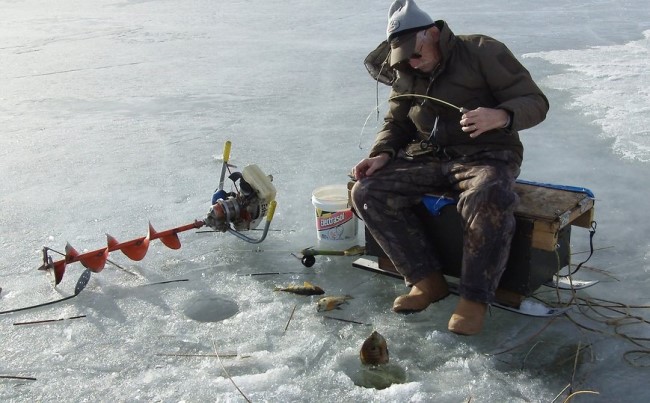Fishing
Thin Ice: Fishing Safely in a Weird Winter

Depending on where you live in the country, Winter 2024 may not be the best ice-fishing year on record. When variable weather like much of America is experiencing strikes, ice conditions will also be variable. It’s important to put safety first if they venture out ice fishing.
“Check the ice as you go, avoid areas where currents can create weaker ice, and if you are not sure the ice is safe find a different waterbody,” cautioned Vermont fisheries biologist Shawn Good. “With good judgment ice fishing is a safe and fun way to get outside in winter. But that means making cautious, smart decisions and changing plans if conditions are not what you hoped for.”
At higher elevations, and on still waters, you’re more likely to find lakes and ponds that have frozen over completely and have fishable ice. What is “fishable ice,” anyway?
“Three to four inches of clear black ice is the minimum for safe ice fishing,” said Good. “For the kind of gray or opaque ice we get after repeated freezing, thawing, and re-freezing we recommend anglers look for at least six inches of ice where they plan to fish.”
Even on a single waterbody it is important to know that ice thickness is not always uniform. Areas around pressure cracks or near stream or river inlets can be thinner and weaker than surrounding ice.
Always carry a spud bar to test the ice as you go. You should have a set of personal ice picks for self-rescue. Anglers should avoid fishing alone and should let someone know where they will be fishing and when they plan on returning home.
“While we wait for colder weather to freeze up waterbodies statewide, I recommend anglers focus on planning and getting their gear in top shape—or that they hit the road and explore the higher elevation waters or northern waters where there is already good ice,” said Good. “Fishing somewhere other than your home waters can be part of the adventure and allure of ice fishing.”






